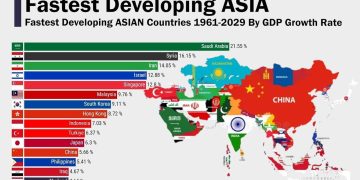1. Introduction: Consumption in a Transforming Economy
As 2025 progresses, consumer behavior in Europe and the United States is undergoing profound shifts. The post-pandemic recovery, combined with technological innovation and evolving societal norms, has created a landscape in which spending patterns, preferences, and expectations are being reshaped.
This article explores the key drivers of contemporary consumer behavior, focusing on digital transformation, disposable income trends, sectoral shifts, and the implications for businesses, policymakers, and investors.
2. Macro Trends in Consumer Spending
Despite economic headwinds such as moderate inflation and cautious growth, consumption remains a vital engine for both the U.S. and European economies:
- United States: Retail and services spending continues to recover, buoyed by wage growth in high-skill sectors. Consumer confidence, though fluctuating, remains above long-term averages.
- Europe: Consumption patterns are more heterogeneous. Northern economies such as Germany and the Netherlands show resilience, while southern economies, facing higher energy costs, exhibit more conservative spending.
- Savings and Debt: Pandemic-era savings have largely been drawn down, and credit utilization is rising moderately, influencing discretionary expenditure.
Consumer spending now reflects both economic realities and evolving lifestyle choices, with digital engagement at the core.
3. The Digital Transformation of Consumption
Digital technologies are redefining how consumers interact with products and services:
- E-commerce Expansion: Online retail accounts for an increasing share of total sales, with U.S. penetration around 20% and Western Europe approaching 15%.
- Mobile and Contactless Payments: Digital wallets, QR codes, and peer-to-peer apps are standard, enabling seamless transactions and tracking of spending patterns.
- Social Commerce and Influencer Marketing: Platforms like Instagram, TikTok, and emerging European equivalents shape purchasing decisions, especially among younger demographics.
- AI-Powered Personalization: Retailers leverage AI to tailor recommendations, optimize inventory, and enhance customer engagement, driving conversion rates.
Digital adoption is no longer optional—businesses that fail to integrate digital experiences risk losing market share.
4. Sectoral Shifts in Spending Patterns
Several sectors illustrate changing consumer priorities:
- Entertainment and Streaming: Subscription-based services, online gaming, and virtual experiences dominate discretionary spending, particularly among younger consumers.
- Health and Wellness: Fitness, mental health apps, organic food, and preventive healthcare are seeing sustained growth.
- Sustainable Consumption: Consumers increasingly prioritize eco-friendly products, renewable energy adoption, and brands with ESG credentials.
- Travel and Mobility: Post-pandemic travel is rebounding, but consumers show preferences for flexibility, safety, and digital integration in booking and experiences.
These shifts reflect a combination of lifestyle evolution, technology integration, and heightened awareness of social and environmental impacts.
5. Demographic Drivers
Age, income, and cultural background influence consumption:
- Generation Z and Millennials: Digital natives prioritize experiences, personalization, and socially responsible brands.
- Middle-Aged Professionals: Stability and convenience guide spending, with emphasis on quality and utility.
- Older Demographics: Value-oriented purchasing, healthcare, and digital adaptation (e.g., telehealth) define behavior.
The interplay between demographics and digital access is shaping long-term market trends and investment opportunities.

6. Consumer Confidence and Economic Sensitivity
Consumer sentiment is influenced by economic realities:
- U.S. Consumers: Wage gains and employment stability support discretionary spending, but rising mortgage rates and inflationary pressures create caution.
- European Consumers: Energy costs and fiscal policies affect disposable income, with Southern Europe displaying lower confidence than Northern Europe.
Understanding these sensitivities is critical for businesses forecasting demand and for policymakers designing economic stimulus measures.
7. Technology as a Driver of Consumer Engagement
Technology enhances both engagement and efficiency:
- AI and Analytics: Predictive modeling informs product offerings, pricing, and inventory management.
- Augmented and Virtual Reality: Retailers increasingly employ immersive experiences to simulate physical shopping and enhance brand interaction.
- Voice and Chat Interfaces: Voice assistants, chatbots, and AI customer support improve accessibility and reduce friction in digital shopping.
Technological adoption not only changes how consumers shop but also alters expectations of convenience, personalization, and responsiveness.
8. Sustainability and Ethical Consumption
Consumers increasingly consider environmental and social factors:
- Eco-Conscious Spending: Demand for recyclable, low-carbon, and ethically sourced products is growing, especially in Western Europe and urban U.S. markets.
- Transparency and Trust: Brands that clearly communicate ESG practices enjoy higher loyalty, while those engaging in greenwashing risk reputational damage.
- Investment Behavior: Retail investors increasingly favor ESG-aligned mutual funds and ETFs, influencing broader market behavior.
Sustainable consumption is thus both an economic and cultural trend, influencing corporate strategy and market offerings.
9. Implications for Businesses and Investors
Understanding shifting consumer behavior is crucial for strategic planning:
- Product Innovation: Companies must anticipate evolving preferences, integrating technology, sustainability, and personalized experiences.
- Digital Infrastructure: Investment in e-commerce platforms, AI analytics, and cybersecurity is essential to retain competitive advantage.
- Market Segmentation: Tailored offerings for demographics and regions maximize relevance and adoption.
- Global Strategy: Companies navigating both U.S. and European markets must reconcile regulatory differences, cultural norms, and technological adoption rates.
Investors should assess firms’ adaptability to digital and sustainable consumption trends as a key driver of long-term returns.
10. Conclusion: Consumers as the Engine of Transformation
Consumer behavior in Europe and the United States is evolving rapidly, driven by digital technology, demographic shifts, and socio-economic trends. Spending is no longer a simple economic function—it is intertwined with lifestyle, values, and technological interaction.
For businesses and investors, success hinges on:
- Embracing digital transformation and AI-driven insights
- Aligning with sustainability and ethical consumption trends
- Responding flexibly to economic pressures and demographic shifts
- Innovating to enhance engagement, convenience, and loyalty
Ultimately, consumers are not just participants in the economy—they are architects of its transformation. Understanding their behavior is essential for navigating the 2025 transatlantic economic landscape.





































